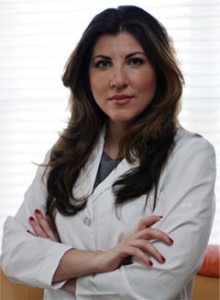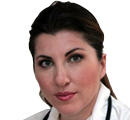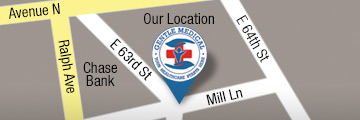How I Diagnose and Treat Arthritis (Joint Pain, Osteoarthritis)
Posted by admin on July 6th, 2013
 “Arthritis can be a disabling and painful condition that can limit your ability to be independent and enjoy your usual activities. Osteoarthritis is common as we age, but just because it’s common doesn’t mean that it can’t be treated. If joint pain is making it difficult for you to engage in your usual activities, make an appointment to come in to see me. If arthritis is causing your pain, treatment is available”.
“Arthritis can be a disabling and painful condition that can limit your ability to be independent and enjoy your usual activities. Osteoarthritis is common as we age, but just because it’s common doesn’t mean that it can’t be treated. If joint pain is making it difficult for you to engage in your usual activities, make an appointment to come in to see me. If arthritis is causing your pain, treatment is available”.
-Dr. Zimilevich, MD
About Arthritis
Did you know that arthritis is actually a large family of conditions affecting the body’s joints, bones, cartilage and muscles? There are more than 100 distinct arthritic conditions! They all have pain and limited mobility in common.
Osteoarthritis is one of the most common types of arthritis. In osteoarthritis, the cartilage that acts as a cushion between the joints, allowing them to glide and move easily without coming in contact, becomes thinner. When this cartilage breaks down as a result of wear and tear over the years, the joints are no longer cushioned and essentially rub together (‘bone on bone’), which causes pain, loss of mobility and stiffness in the affected joint(s). Over time, bone spurs and other bony abnormalities appear.

Unfortunately, there is no cure for this form of arthritis. The cause is not completely understood, although we do know that aging plays a role. It is estimated that almost 30 million Americans are living with osteoarthritis.
What are the risk factors for arthritis?
Although arthritis is more common in older people due to joint wear and tear, aging is not the only factor implicated in the development of arthritis. Other factors also play a role:
- Genetics/Heredity- if arthritis “runs in the family”, you might be more likely to develop arthritis, especially arthritis affecting the hands. This does not mean that you are guaranteed to get it, but it does mean that I will watch you more closely for signs and symptoms of the disease.
- Obesity- Being overweight increases your risk of developing arthritis. For every pound of weight you gain, you put four extra pounds of pressure on your knees and six extra pounds of pressure on your hips! Your knees and hips bear the brunt of your weight when you are upright. Losing even a small amount of weight can improve arthritis symptoms.
- Muscle weakness- Muscles surround your joints and help to hold them in proper alignment. When your muscles are weak, more stress is placed on your joints. Studies have shown that weak thigh muscles can predispose to the development of arthritis of the knees.
- Overuse/Injury- years of using joints to excess at work or in sports can predispose you to develop arthritis, as can injury to a joint.
What are the symptoms of arthritis?
Osteoarthritis usually begins gradually over a long period of time. In the beginning, one or more joints may be occasionally stiff and sore. As the disease progresses and the damage worsens, affected joints become painful after periods of inactivity or overuse. Typically, you may experience pain upon awakening that improves as you move around, only to return at night after a full day’s activity. Walking may become difficult as the disease progresses. It is important to note that some people develop mild symptoms that never get worse.
What joints are typically affected?
The weight-bearing joints are commonly affected (hips, knees and back). The base of the big toe, small finger joints, base of the thumb and the neck may also be affected.
How is arthritis diagnosed?
Arthritis can usually be diagnosed on the basis of medical history, physical exam and x-rays of the affected joint(s). I will examine the affected joint(s), looking for swelling, redness and decreased range of motion. If fluid has gathered in the joint space, I may withdraw some of the fluid with a needle for analysis. Your description of your symptoms often tells me a lot about the likelihood of arthritis as the cause of your symptoms, and x-rays showing decreased joint space due to erosion of the cartilage between your joints can confirm the diagnosis.
What treatment options are available?
Arthritis can be managed using several different strategies:
- Pain relief- anti-inflammatory medications can help with pain relief by decreasing inflammation. Steroids (orally or by injection into the affected joint) can also improve pain
- Exercise- believe it or not, exercise can help to prevent worsening of arthritis by strengthening the muscles that support the affected joint(s). Walking is one form of exercise that can help to strengthen weak muscles and keep you mobile. Swimming is another option because there is no stress on the joints when you are immersed in water.
- Physiotherapy- physiotherapy can help you maintain and even improve mobility and strengthen muscles, which can improve your ability to walk with less discomfort. Physiotherapy can also improve balance and coordination.
- Weight control- if you are overweight, losing even a small amount of weight can decrease wear and tear on your joints.
If you have severe arthritis with constant pain and limited mobility, surgery may be an option. Surgery is generally not considered unless and until all other options have been tried. If you have severe arthritis, I can refer you to an orthopedic surgeon who can evaluate you to see if surgery is warranted.
If you are suffering from joint pain, don’t assume that arthritis is an inevitable part of aging that you just have to live with. Make an appointment to come into the clinic and see me- together we can ensure that your symptoms are caused by arthritis and determine the best course of action to improve your symptoms and keep you active and independent.
Our Location

6301 Mill Lane, Brooklyn, NY 11234.
(718) 942-4600



